Layout and features
Alderwood boards are usually characterised by a mass of features and extras. This is the premium sector, after all.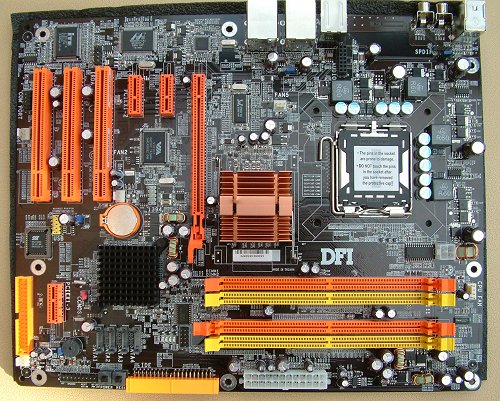
First thoughts are positive. Components appear to be sensibly located and PCB space is used wisely. Intel's 915/925 range of chipsets, boasting new technology such as DDR2 memory support, PCI Express protocol, and a new socket layout, has forced motherboard designers into adopting a slightly non-conventional approach. What remains conventional, at least as far as DFI is concerned, is the use of UV-reactive cables,ports and slots.
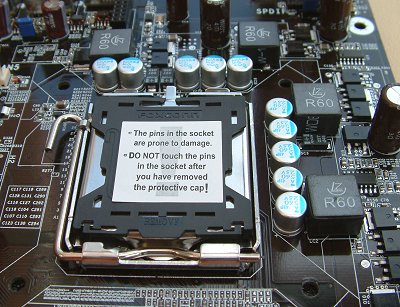
As you may well be aware, Intel's LGA775 (Socket T) redefines the just how CPU and motherboard interact with one another. Motherboards' sockets now carry the required number of pins, and compliant CPUs have a matching number of conductive pads. Bent CPU pins, as far as LGA775 processors are concerned, is a thing of that past. Bent motherboard pins, however, is a whole new ball game. Further, LGA775 coolers simply push in over the top of the processor, so adjoining components are limited in height. Cooler installation is a cinch, thanks to the generous amount of clearance around the socket area. DFI's also done well in the power area. A 4-phase PWM (Pulse Width Modulation) and use of high-quality capacitors should keep wattage-eating Prescott processors trundling along nicely.
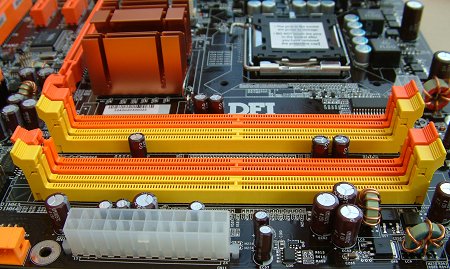
PCI Express cards, especially NVIDIA's, are generally long. That's what comes from having to carry a bridge chip on the PCB. With that being the case, DFI should push up DDR2 slots to the very right-hand side. A personal pet hate of mine is the inability to easily disengage RAM modules when a graphics card is in place. A right-hand shift of just a couple of cms would cure this problem. The above picture's conventional look belies the fact that DDR2 modules have 240 pins and aren't compatible with regular DDR. Also, 900-series boards use a server-derived 24-pin EPS main power connector as opposed to most board's 20-pin variety. Don't worry, 20-pin connectors work just fine. A passive northbridge heatsink gets my thumbs up.
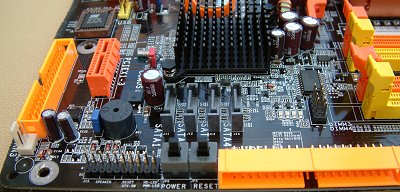
DFI helps out the reviewer by adding power and reset buttons right on the PCB. They're also handy if you're continually experimenting with performance-related BIOS changes. Parallel ATA support is thin on the ground. There's a single rotated IDE port vs. 4 SATA ports just behind. DFI, however, helps out by adding a second PATA port by unconventional means. More on that later. SATA support is all derived from Intel's ICH6R (non-W) southbridge, so RAID0, RAID1 and JBOD modes are available. It's strange to see no discrete RAID support in any form. Alderwood boards usually carry Silicon Image or Highpoint/Promise RAID chips. On-chip 4-port SATA support is probably enough, however.
The LANPARTY 925X-T2 is home to 3 PCI (32-bit/33MHz), 3 X1 PCI Express, and a single X16 PCI Express port for graphics use. PCI Express is faster, neater protocol for data transmission. DFI chooses to locate an X1 PCI-E port just above the floppy's. The other two reside between the older PCI and ever-so-fast X16 PCI Express ports. They tiny X1 ports give the board a decidedly odd look.
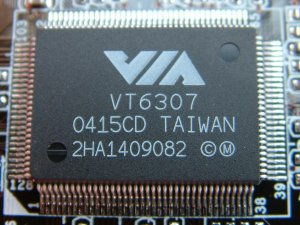
DFI's used the space normally reserved for longer PCI slots to house VIA's ubiquitous VT6307 2-port FireWire controller. It's been around the block a few times and is a competent enough single-chip solution. VIA's VT6306 is a 3-port model. I'd have preferred that instead.
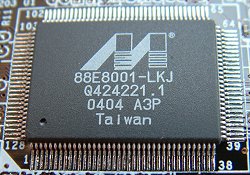
The ASIC tour continues with Marvell's single-chip PCI-based Gigabit Ethernet controller. It's popular enough, but the usual PCI-related bandwidth implications apply here. What the board needs, really, is a PCI Express Gigabit Controller. Higher internal bandwidth that's not shared between lanes is a perfect base.
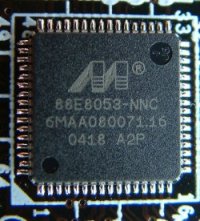
Right next door to the PCI-based controller is a PCI Express version. Dual Gigabit LAN, usually comprised on PCI and PCIe, is a common affair on 915/925 boards. Networking is one of the DFI 925X-T2's strong points.

A tour of chipsets always takes in the board's audio CODEC. DFI's chosen to mount the audio on a separate riser card. You can just about see the interface hiding behind the left-hand USB2.0 ports. Named Karajan, presumably after the great Herbert Von Karajan, the card employs Realtek's ALC880 7.1-channel CODEC to process sound from Intel's high-performance on-chip Azalia audio. A completed I/O section gives the board a normal look. DFI has populated the back panel with high-speed devices, from 6 USB2.0 ports, dual Gigabit LAN and FireWire400. S/PDIF inputs and outputs, as well as older PS/2 ports, aren't forgotten.









